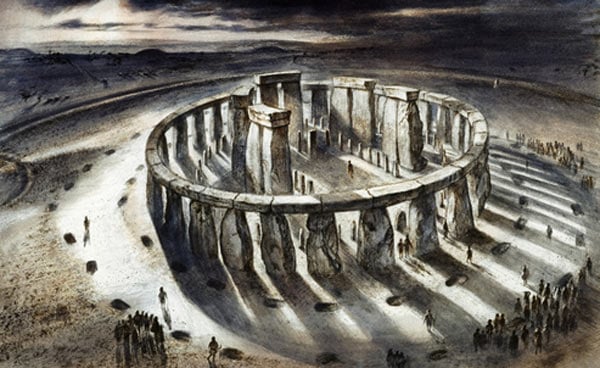Outline of missing stones appear at Stonehenge, proving stone circle was closed
Parch marks in the grass at Stonehenge following a dry summer have helped solve a centuries-long puzzle about whether Stonehenge was ever a complete circle, according to a news report in The Telegraph. The parch marks - areas where the grass does not grow as strongly as in other areas during hot weather - reveal places where the missing sarsen stones may have once stood.
Although a large number of stones survive at Stonehenge, the monument is nowhere near complete. This has led many authors over the last few centuries, such as John Wood (1747), William Hinders Petrie (1880), and Christopher Tilley and colleagues (2007) to question whether the monument was ever finished. This non-completion theory is based on the presence and use of what they call ‘inadequate’ stones, the absence of approximately one third of the Sarsen Circle and the majority of the lintels, and the absence of evidence for the removal of stones. Other scholars have suggested that Stonehenge was completed but it was never a fully closed circle.

Diagram of Stonehenge showing where stones should be, if it was ever a fully complete circle. Parch marks were found between stone 16 and 21. Credit: British Archaeology
A high resolution geophysical survey conducted a few years ago failed to pick up evidence of the holes. But English Heritage has now announced that dry summers have revealed the faint outline of the missing megaliths. Archaeological features below the ground, including pits, stones, or earthworks, affect the rate that grass grows above them, even millennia later, and parched grass can often highlight where these archaeological features are located. Such parch marks have previously helped to identify Roman forts and Iron age earthworks, and now it appears they have helped solved one of the biggest questions about the ancient stone circle of Stonehenge.

Four distinct parch marks can be seen between stones 16 and 21, possibly showing where large megalithic stones once stood. Image source.
The parch marks were first noticed in July last year by an English Heritage steward who alerted archaeologists to their existence.
"If these stone holes actually held upright stones then we've got a complete circle," said Susan Greaney from English Heritage. "A lot of people assume we've excavated the entire site and everything we're ever going to know about the monument is known. But actually there's quite a lot we still don't know and there's quite a lot that can be discovered just through non-excavation methods."

Parch marks at Stonehenge. Image source.
A scientific paper which explains how the parch marks provide evidence for the ‘complete’ theory of Stonehenge, has been published in the latest issue of the journal Antiquity.
Featured image: Reconstruction drawing of Stonehenge as it might have appeared in 1000BC by Alan Sorrell


















Comments
i feel like they should be using like ground penetrating radar to see what else might be missing...or xrays or something. Can the site be rebuilt/fixed? Would someone care enough to do it? I'm sure the miles of red tape involved would prevent most people from trying but it would be so awesome to see this how it was meant to be seen!
love, light and blessings
AB
I'm betting on the removal of the stones being a method to discourage the continued use of the circle. Just curious...what would the reaction have been back in those days if they had discovered that the stone had been removed and the site desecrated by say...the Romans (for example)? Would it have been abandoned?
I think it has something to do with sound vibration.
Peace and Love,
Ricky.
what is obvious here is that the peoples who remove the stones did not know the primary usage of that circle
either they were stranger from the place,either they just lost the transmission of knownledge
where have they gone
Pages